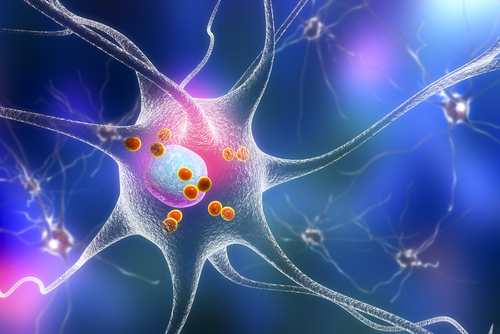Energy Demands to Counter Gravity in Vertical Neurons May Lie at Origin of ALS, Study Proposes

Excessive energy demands to overcome gravity in nerve cells directed downward — such as those involved in the control of limb movements — may explain why amyotrophic lateral sclerosis (ALS) affects certain motor neurons while leaving others untouched, a study has proposed.
As people age, nerve fibers disposed vertically may start to accumulate too much cell waste, which can eventually lead to nerve cell damage and death. The researchers say this could potentially even trigger ALS onset.
The study, “Consideration of gravity as a possible etiological factor in amyotrophic lateral sclerosis,” was published in the journal Medical Hypotheses.
Amyotrophic lateral sclerosis (ALS) is a neurodegenerative disease with unknown origin that predominantly affects motor neurons — specialized nerve cells that are essential for the brain to control the body’s muscles.
The disease can lead to the shrinkage and death of both upper motor neurons, which originate in the brain, and lower motor neurons. The nerve fibers, or axons, in the lower motor neurons send messages from the spinal cord and brainstem to the muscles.
Discuss the latest research in the ALS News Today forums!
The researchers note that not all motor neurons get damaged in ALS. Oculomotor and abducens nerves — responsible for eye and eyelid movements — and pudendal nerves, which are involved in the control of the anal sphincter, usually are spared up until the later stages of the disease. All of those nerves contain large amounts of motor neurons.
As ALS typically starts during middle adulthood, between ages 50 to 60, scientists believe its onset relates to abnormalities of aging, such as excessive accumulation of waste or abnormal proteins in motor neurons.
The findings suggest that ALS, and the uneven distribution of neuronal loss, cannot be fully explained by genetic changes and differences in the function and composition of neurons. Thus, other mechanisms are likely to come into play.
Here, scientists investigated a new hypothesis to explain why some neurons become damaged and die during ALS, while others do not.
They propose that the direction of the axon, rather than its functional type or length, contributes the most to the onset of ALS.
According to their theory, nerve fibers directed downward require extra energy to move waste or unnecessary substances away from nerve endings upward toward the neuron’s cell body. The nerve endings connect to other neurons or muscles (synapses).
The movement of waste occurs through a type of conveyance called retrograde fast axonal transport, which is used by neurons to eliminate mishandled and damaged proteins, and transport signalling molecules.
Under this type of transport, it is expected that nerve cells disposed vertically need extra energy to carry waste and other cargo against gravity.
Based on this premise, researchers mathematically estimated the additional energy required in axons directed vertically — like upper and lower motor neurons. They compared that to the energy required by axons that are naturally disposed horizontally or transversely, such as oculomotor and abducens nerves.
Researchers calculated that up to 2% of ATP (adenosine triphosphate) — the main energy currency of cells — is “excessively consumed every day in vertically running axons, compared to transverse axons.”
“This may seem insignificant when considered over a short-term period. However, when considered over the long-term, such as the decades that occur prior to the onset of ALS, this excessive energy consumption due to gravity may cause the impaired accumulation of waste in vertically-running axons,” the investigators said.
As most motor neurons project downward, and axonal transport already is suggested to be impaired in ALS patients, unretrieved waste may gradually sediment in axon terminals by gravity. That may result in neuron death.
“Although the theory that gravity is one of the mechanisms responsible for ALS is still hypothetical, it is theoretically reasonable and compatible with the clinical manifestations of the disease,” the researchers said.
Their model could explain the initial clinical presentation of limb-onset ALS, likely to start at one of the upper limbs, usually on the dominant hand, and then spread to other limbs.
Movement is usually more intense in the dominant hand as compared to lower limbs. Consequently, the produced and accumulated waste levels that result from cell activity could be higher in the upper limbs, triggering disease.
Other factors, such as exercise or routine physical demands, also may be important to ALS onset, and may be compatible with this theory.
More early studies, using nerve cells growing in the lab or animal models, are warranted to confirm this hypothesis, the researchers said.






